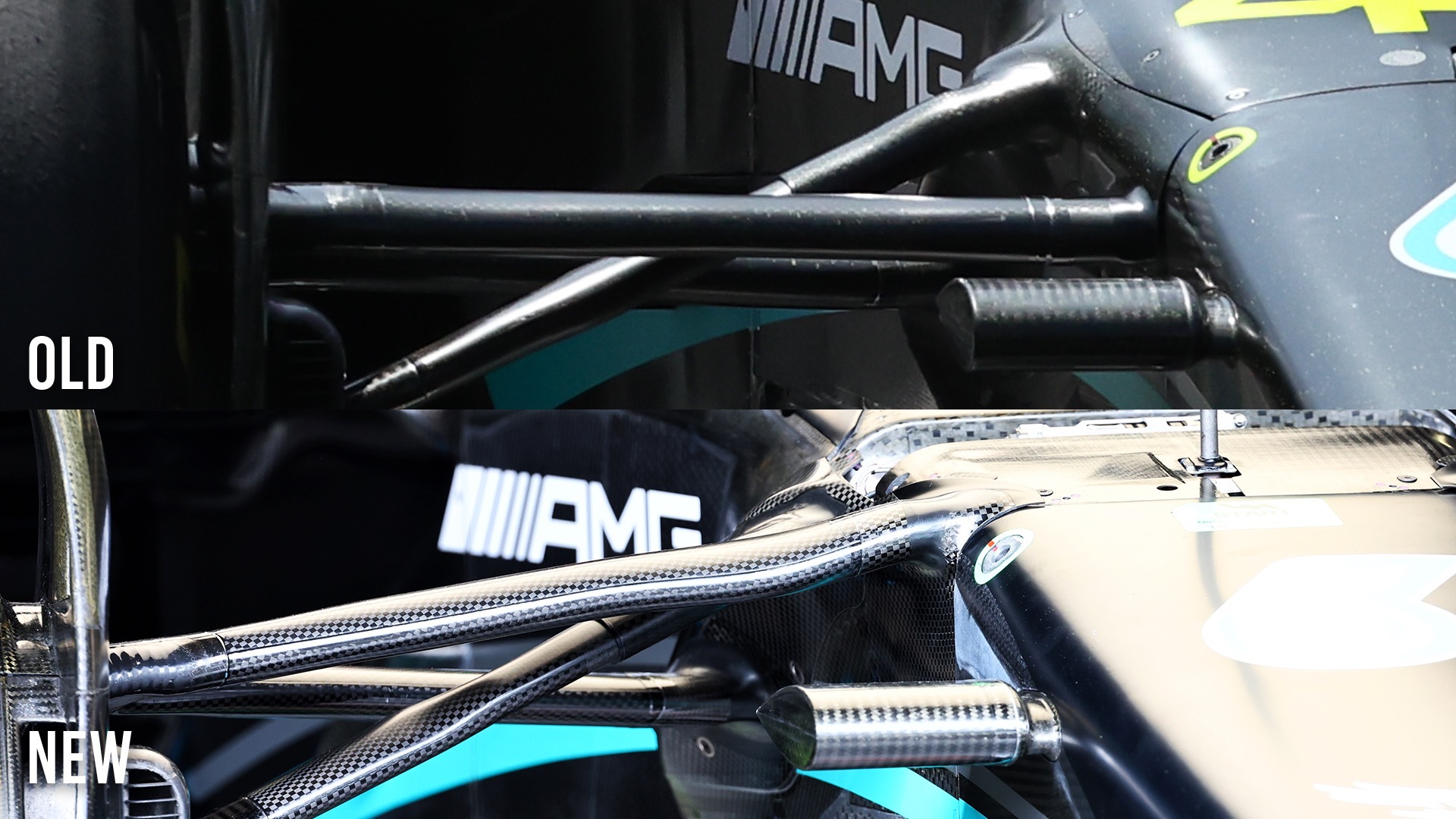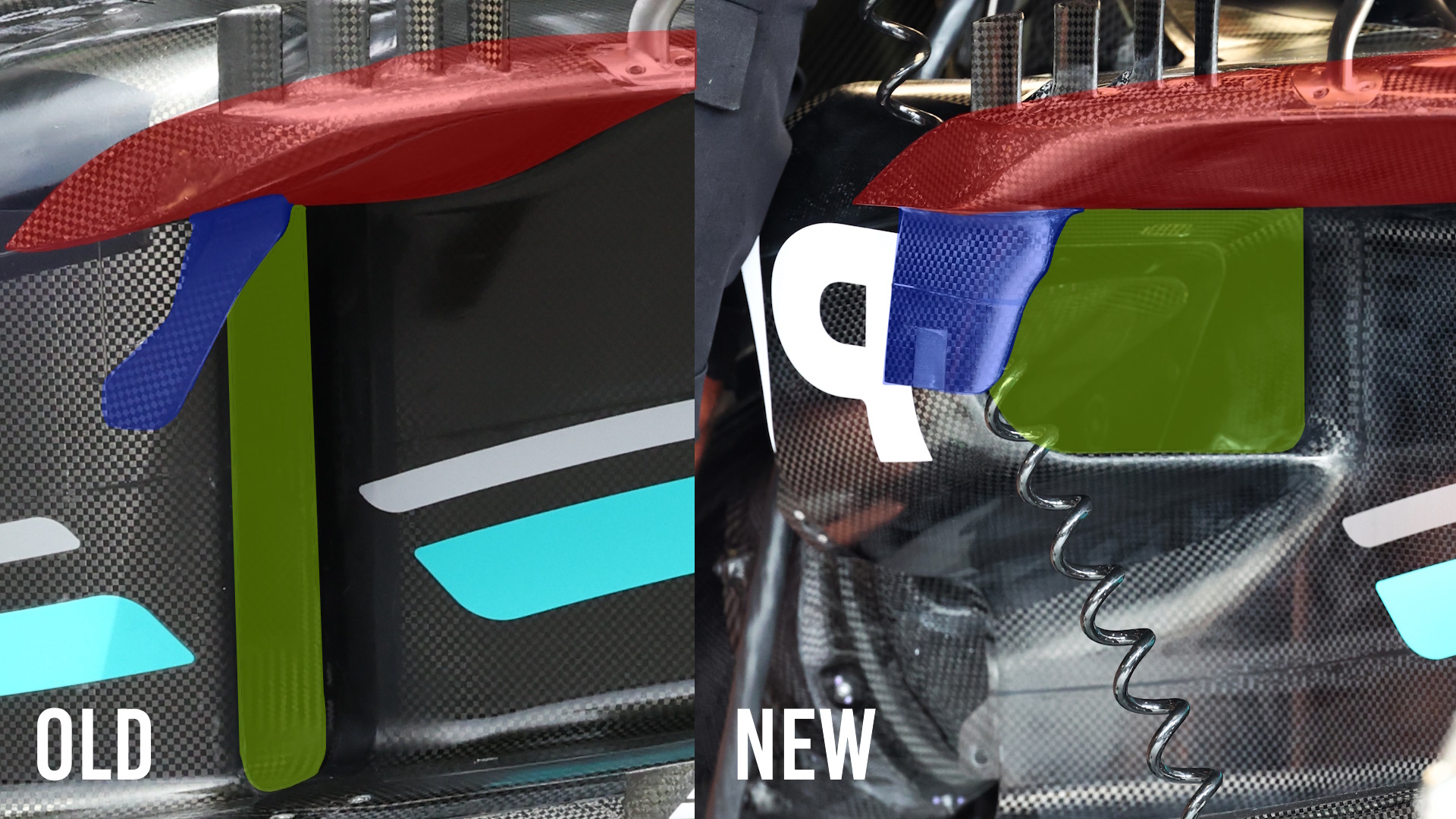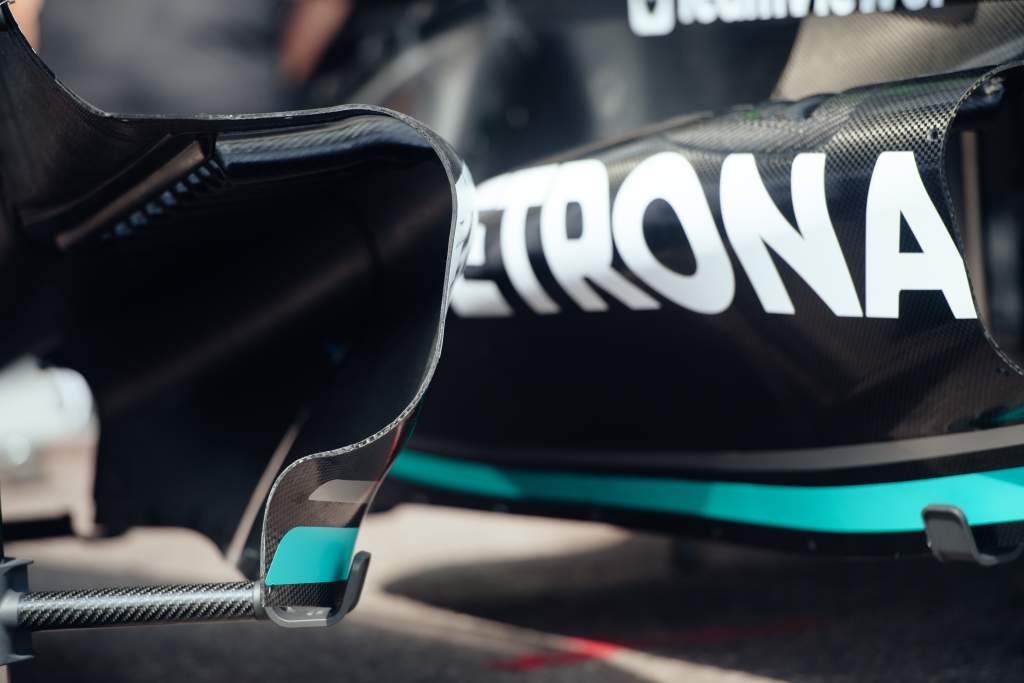Up Next

Mercedes has only revealed a limited amount of its big 2023 Formula 1 car upgrade so far at the Monaco Grand Prix but the scale of change is already clear.
We have already seen some angles of the revised front suspension and clear images of the new sidepod, which confirm certain expectations about mechanical and aerodynamic aspects of this upgrade package.
Firm details are hard to determine, for various reasons – limited angles of the suspension, the fact the sidepod bodywork is not affixed to the car, and the absence of any imagery of the floor.
Even when the car breaks cover in full, the likelihood is that we will only see whatever surface changes have been made to the floor as the real detail lies beneath.
That said, we can make initial conclusions about how different the new front suspension and sidepods are from before and what they intend to achieve.
Mercedes has clearly prioritised better platform control with its mechanical changes, and has talked about this a lot alongside its bodywork upgrades.

On the front suspension the front top wishbone has been moved higher, with a small kink it in rather than a straight arm, and blisters within the nose to accommodate that.
But so far we cannot see if the rear top wishbone has also been mounted lower, and we need definitive side-on shots to measure the angle.
The Red Bull runs with around 45 degrees of front anti-dive, the previous Mercedes only around 15 degrees. The changes Mercedes appears to have made would increase that angle.

Although the new Mercedes sidepods now feature a conventional horizontal (rather than vertical) radiator inlet they are not heavily undercut in the way of the Red Bull or Aston Martin.
This is almost certainly because Mercedes is constrained from shaping the sidepods in that way by the existing cockpit position and side impact structures.
It is stuck with these by using the same chassis as before. That likely explains why the side impact protection system (SIPS) wing, which appears to be slightly reprofiled, is still prominently exposed and positioned ahead of what is now the more conventional sidepod shape behind.

The Mercedes therefore looks like an adaptation to a conventional sidepod within those fixed points, which means abandoning the unique, extremely shrunken design from before in favour of something that extends further along the body of the car, sloping to the rear in a downwash style similar to Aston Martin.

However, this looks more rudimentary than the other, more mature variants of this style, with the images seen so far suggesting a much less pronounced ‘water slide’ between the outer edge of the sidepod and the engine bodywork.
As this is Mercedes’ first iteration of a design, though, and has been arranged around the existing car and engine architecture, there is likely to be plenty of room to evolve it further.
One aspect of the new Mercedes design that may stand out when the car is pictured in its complete form is that the retained high cooling cannon on the engine cover, combined with the revised wider sidepod and downwash, will leave more of an exposed rear area.



